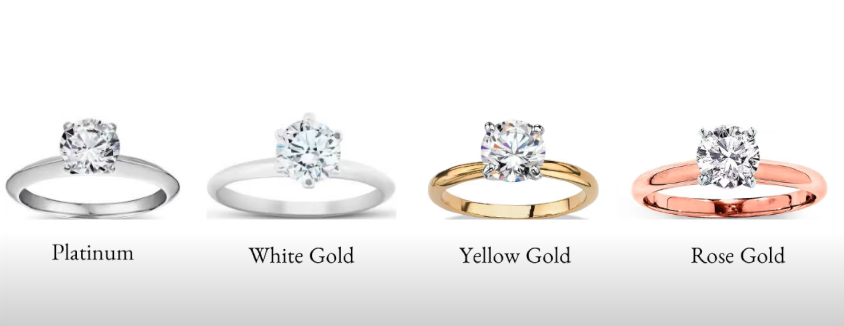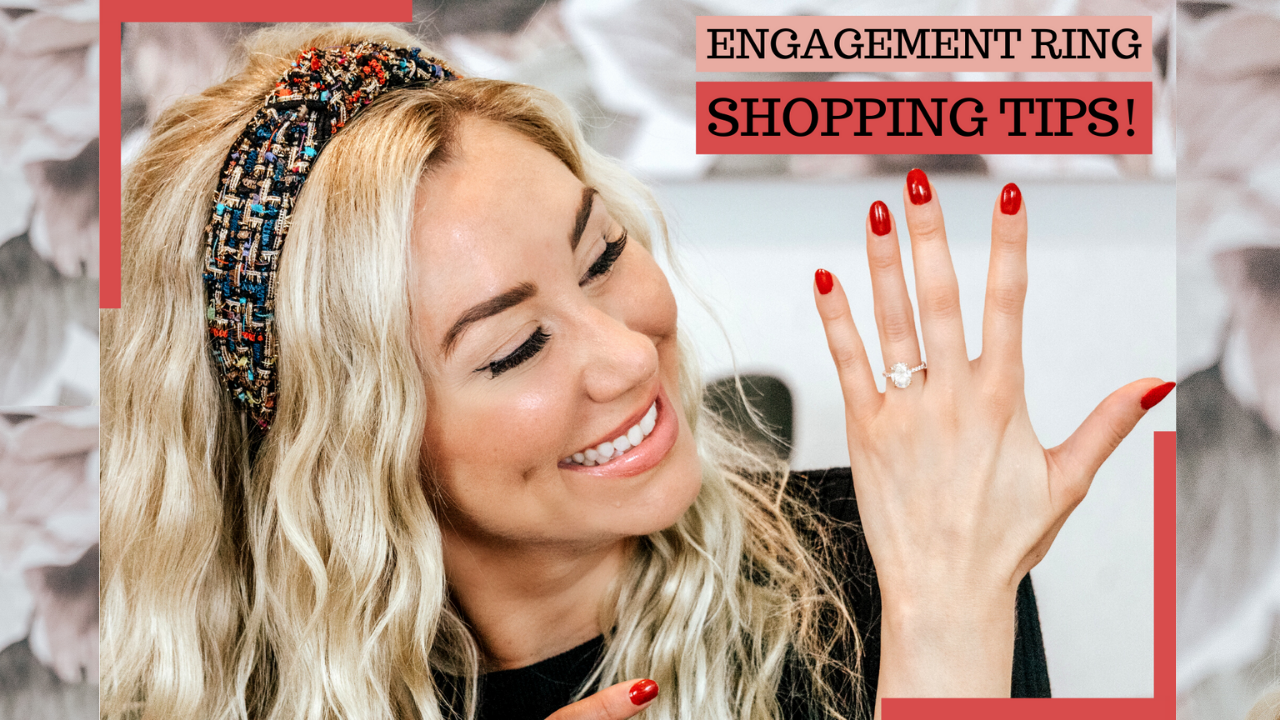Engagement Ring Shopping - Everything You Need To Know!
Can you believe it has officially been two years since Freddie and I got engaged!? We are so excited to take the next step and finally enjoy our special day - but more on that later! Let’s talk diamonds!
A few months before Freddie and I got engaged, we visited a local jeweler to design the ring. We walked in with zero knowledge and left being wildly well versed in all things diamonds. After getting engaged, we’ve received many questions about our ring and picking one out in general. We put together a video sharing everything you need to know about choosing the perfect engagement ring - understanding the 4 C’s (and why they’re so important), to deciding on the shape, band, color, halo, under halo and price! If you love a good visual - enjoy the video above. If you’re more of a reader, find the diamond notes below!
Now I have to ask, what’s your favorite shaped diamond??
The Four C’s: Cut, Color, Clarity and Carat
The most important C is Cut. Cut is the #1 most important part of the diamond, it determines the sparkle and brilliance of the stone. There are different types of stones: perfect (ideal/excellent) cut stone, deep cut stone and shallow cut stone.
Facets in diamonds work as mirrors. If it’s too deep or shallow of a stone, when light comes in it’s going to bounce through the bottom and through the sides, making it look dull and lifeless. If you have an ideal cut stone, when the light travels in, it’s going to bounce right back out giving your diamond the sparkle and WOW factor!
Color is the next most important C as you can’t hide color. Color ranges from D-Z, but you want to be in the I-d range. D, E, and F are colorless diamonds, while G, H, and I are near-colorless diamonds. As long as you’re in the I color and better, (I to D range), you aren’t going to be able to see color in your diamond.
Clarity is the next C. Clarity is the assessment of small imperfections on the surface and within the stone. Surface flaws are called blemishes, while internal defects are known as inclusions. The good news is that most imperfections you cannot see with the naked eye! The chart for clarity goes from Flawless being the best to I3 being the worst. After the flawless grade, you’re going into VVS1 which is very very slightly included meaning other than a little point or dot, even a trained eye won’t be able to spot it and only can be seen under a microscope. VVS1 diamond are the cream of the crop after flawless.
However, for the best value, you can select a diamond with inclusions that can’t be seen through the crown without magnification, (aka eye clean diamonds). A diamond with an SI or VS clarity grade will help get you the most bang for your buck (VS1, VS2 & SI1, SI2 and you are good). These diamonds are much less expensive and look the same as the higher grades, visually.
The last C is Carat. Carat is the unit of measurement for the physical weight of diamonds. Carats vary in size. If you want something dainty or on the smaller end, you can look into a .25 or .5 Depending on preference and budget, you can also look at carats ranging from 1, 2, 3, 4 and above.
Remember, prices of diamonds can vary drastically based on the 4 C’s.
Let’s chat design; shapes, band colors, halo, & under halo
Diamonds come in all shapes. The shape of the diamond comes down to style. Let’s take a look at the most popular shapes and who is rocking them.
ROUND SHAPED DIAMOND
Worn by Rosie Huntington Whitley. Round diamonds are the most popular of shapes chosen. its classic and simple design is made for maximum sparkle.
Princess-cut diamond
Worn by Kate Bosworth. Princess cut diamonds are available for those wanting a square stone, offering a similar brilliance or sparkle of a round shaped diamond.
Emerald shaped diamond
Worn by Beyonce. Emerald shape diamonds have long facets and layered corners that resemble stairs and like its wearer is strong and bold. An emerald shape will highlight clarity better than any of the other shapes.
Oval shaped diamond
Worn by Blake Lively. With an elongated design, oval diamonds encompass you in its captivating and elegant shape.
Cushion shaped diamond
Worn by Gabrielle Union. Cushion shaped stones have a square-rectangular cut with rounded corners and large facets to enhance the brilliance of the stone.
Marquise shaped diamond
Worn by Christina Milian. This shape is sure to behold extraordinary character and plenty of sparkle!
Pear shaped diamond
Worn by Katherine Heigel. The pear shape is a very stylish and bold mix between a round and marquise shaped diamond.
Band Colors
Choosing the right metal for your engagement ring is all based on style.If your significant other is drawn to cooler hues and silver-toned jewelry, then platinum or white gold is the way to go. Yellow gold or rose gold are good choices if your significant other gravitates toward warmer tones.
What is a halo? And under halo?
A traditional, standard halo ring setting features a halo of diamonds that surrounds the center stone, which can give the appearance of a larger center stone. An under halo features a row or ring of pave set diamonds that will sit on the side.















